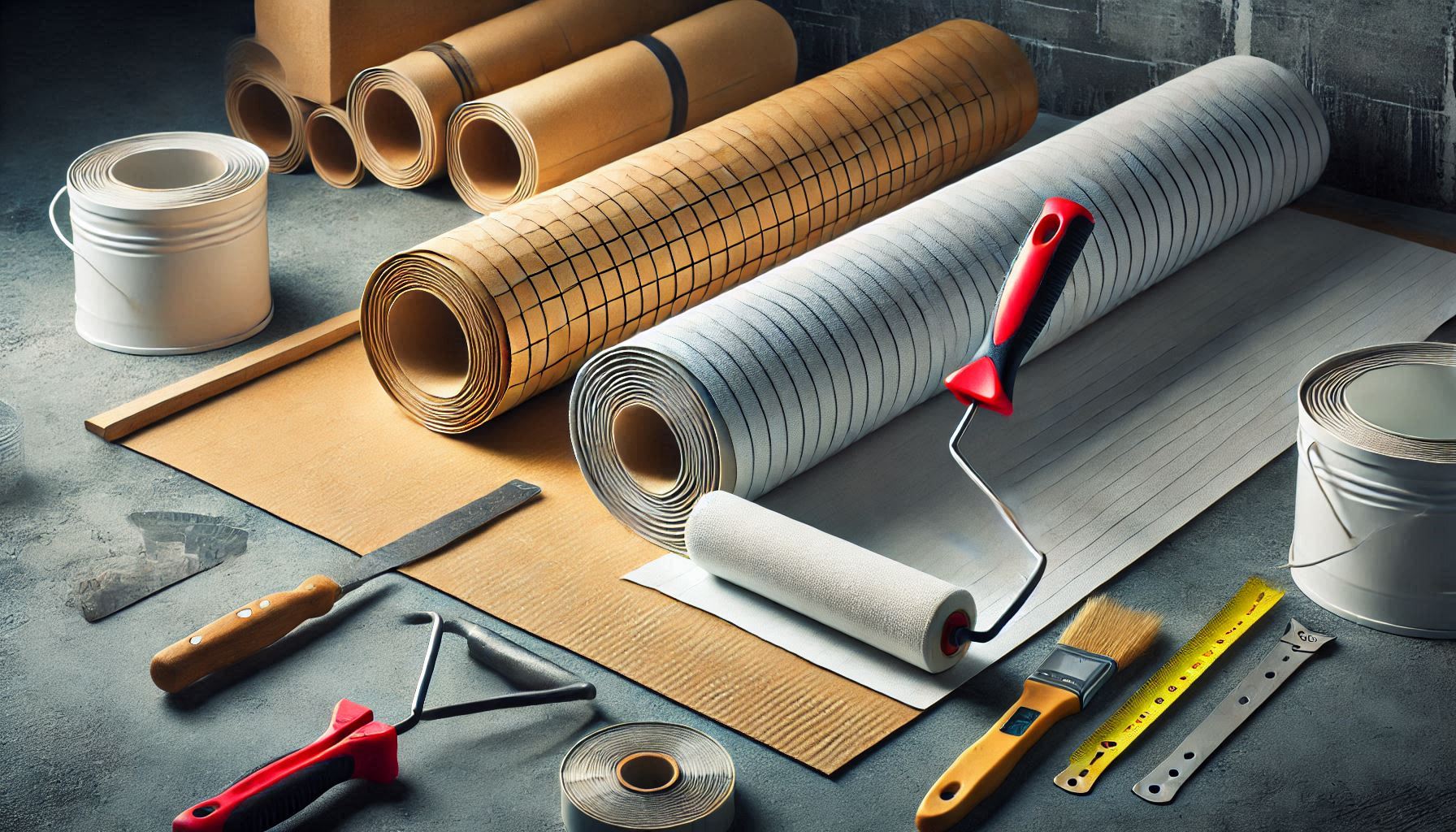Wall Material Underlayment Rolls – Your Walls’ Best Companion!
When it comes to building or renovating a space, having the right wall material underlayment rolls can make all the difference. These versatile rolls are a vital addition to any construction or remodeling project, offering durability, protection, and structural integrity. Whether you’re tackling a new construction project or remodeling your space, wall material underlayment rolls are essential for providing a solid foundation that keeps your walls in excellent condition.
This article will explore everything you need to know about wall material underlayment rolls, their benefits, installation tips, and how they can make your building or design project much smoother and efficient. Let’s dive in!
What Are Wall Material Underlayment Rolls?
Before we explore their uses, let’s break down what wall material underlayment rolls are. These are versatile, durable materials laid between your wall framing and wall coverings, such as drywall, siding, or plaster. They act as a protective barrier, helping to insulate, waterproof, and strengthen your walls against external elements.
Wall material underlayment rolls provide solid protection, much like how Honey Wheat Wood Floors can add a touch of elegance and warmth to any space. Whether you’re remodeling or building, both play crucial roles in enhancing the overall quality and comfort of your home.
Why You Need Wall Material Underlayment Rolls
Imagine building your dream space only to find that your walls aren’t properly insulated or protected against water damage. This is where wall material underlayment rolls step in. They provide a layer of protection that extends the lifespan of your walls and prevents potential damage.
Here’s why they are essential:
- Water Resistance: They keep moisture at bay, protecting your walls from water intrusion.
- Insulation: Certain types of underlayment rolls add thermal protection to maintain optimal indoor temperatures.
- Strength: They add structural integrity to the walls, preventing cracks or wear over time.
- Ease of Installation: They come in roll form, which makes them easier to transport, cut, and install compared to other wall protection options.
Types of Wall Material Underlayment Rolls
When you search for wall material underlayment rolls, you’ll find a variety of types. Choosing the right type depends on your project’s specific needs, location, and the type of wall you’re working on. Let’s explore the most common types:
1. Waterproof Underlayment Rolls
These are a top choice in areas exposed to moisture, such as kitchens, bathrooms, or exterior walls. They are specially designed to prevent water infiltration and protect your walls from mold and mildew.
2. Thermal Insulation Underlayment Rolls
These rolls add an extra layer of insulation to your walls, helping maintain consistent indoor temperatures. They are perfect for regions with extreme weather conditions or spaces that experience poor thermal regulation.
3. Soundproof Underlayment Rolls
For residential areas or commercial spaces like offices and apartments, soundproof wall material underlayment rolls are vital. They reduce noise transmission and ensure privacy and peace within different spaces.
4. Fire-Resistant Underlayment Rolls
These are excellent options for areas prone to fire hazards or where fire protection is a legal building requirement. They provide an added layer of safety and compliance.
5. Vapor Barrier Underlayment Rolls
They’re perfect for projects in humid areas or basements, as they block excess moisture from seeping into your walls.
Choosing the right underlayment roll depends on factors like climate, purpose, and construction design.
How to Choose the Right Wall Material Underlayment Rolls
Selecting the perfect wall material underlayment rolls might seem overwhelming at first, but focusing on a few key factors can simplify the process. Here are the steps to help you make the best choice:
1. Assess Your Environment
Are you building in a humid or dry climate? Are you working on interior spaces or exterior ones? Knowing your environment will help you select between water-resistant, fire-resistant, or insulating underlayment rolls.
2. Understand Your Project Type
- Home Renovation: Use soundproof or thermal underlayment rolls for better insulation and comfort.
- New Construction: Waterproof and durable underlayment rolls are better for exterior walls.
- Basement Insulation: Opt for vapor barriers to ensure water resistance.
3. Look at Material Options
Check the type of material your underlayment is made of—common options include polyethylene, fiberglass, or polyester blends. Each has unique benefits, such as durability, flexibility, or ease of application.
4. Assess Ease of Installation
Choose wall material underlayment rolls that fit your space well and can be installed without excessive difficulty. Rolls that are easy to cut and fit save time and labor costs.
Step-by-Step Guide to Installing Wall Material Underlayment Rolls
Installing wall material underlayment rolls is easier than you think when you follow a step-by-step approach. Here’s how you can get it right:
Step 1: Prepare the Surface
Before installing your underlayment rolls, ensure the wall framing or surface is clean and dry. Any dust, debris, or moisture should be cleared away to ensure optimal adhesion.
Step 2: Measure Your Space
Carefully measure your wall space to determine how much underlayment will be required. Always cut a little extra to ensure proper fitting.
Step 3: Cut the Roll to Size
Use a sharp utility knife or scissors to cut the wall material underlayment rolls to the right size. Make sure the edges are clean and straight for easy installation.
Step 4: Attach the Underlayment
Using a staple gun or appropriate adhesive, attach the underlayment to the wall. Start at one end and work your way across, ensuring it lies flat and smooth.
Step 5: Overlap the Rolls
If you’re using multiple rolls, ensure there’s a slight overlap to prevent any gaps that could compromise the underlayment’s effectiveness.
Step 6: Seal the Edges
For added protection, seal all edges with appropriate tape or adhesive to create a waterproof barrier.
Maintenance Tips for Wall Material Underlayment Rolls
Taking care of your wall material underlayment rolls will prolong their lifespan and effectiveness. Here are quick tips:
- Regularly inspect your walls for any signs of wear or water intrusion.
- Check for mold or mildew in areas with excess moisture.
- Ensure proper sealing at edges and overlaps every season.
With these simple practices, your underlayment will remain in excellent shape for years to come.
Conclusion: Upgrade Your Space with Wall Material Underlayment Rolls
The addition of wall material underlayment rolls can dramatically change the durability, insulation, and longevity of your walls. Whether you’re tackling a major renovation, building your dream space, or just looking for added protection, these versatile rolls are an investment worth making.
They’re easy to use, affordable, and incredibly efficient. So why wait? Explore wall material underlayment rolls today and transform the way you protect and maintain your walls.
Upgrade your walls—your home or commercial space will thank you!














Post Comment